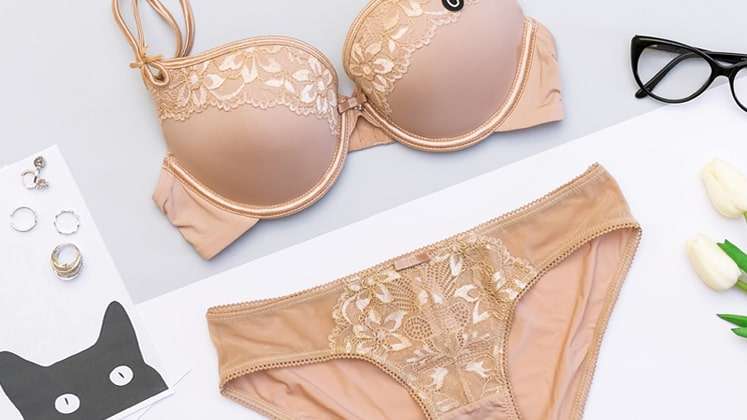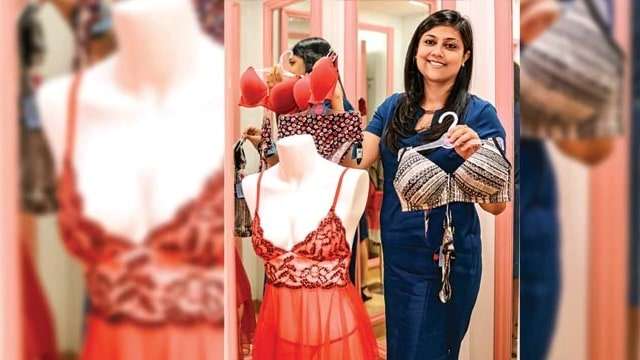
From being a mere necessity and a basic piece of clothing to becoming a style statement, innerwear has come a long way today. The consumer today wants a plethora of options in pattern, print, material and fit, when it comes to the category. The permutations of these variations can be plenty, and have been deduced successfully by international brands in India. What entices the stakeholders of the industry is the fact that the Indian innerwear retailers and brands are now striving to be at par with these international players, while striking the balance between cost-effectiveness and quality standards to conform to the Indian consumer.
The statistics also are emblematic of the ripeness of this market segment with opportunities, as a report by statista.com suggests that the revenue of the Indian innerwear segment was US $15,449 million in 2018 and is expected to consolidate with a CAGR of 11.3% in 2019-2021.
The Indian innerwear market is slowly on its way to match up to the pioneers in the segment – China, where the revenue generated is expected to be US $ 60,346 million in 2019.
Aimed to manufacture niche innerwear garments to fulfil the needs of the Indian woman, Clovia is one of the fastest growing lingerie brands in India.
Sharing its business model with Apparel Resources, the company’s Founder & Director Neha Kant said: “I realized that even if the wardrobes had changed, the innerwear really hadn’t. The category was extremely under-serviced. Travelled internationally, I had seen the kind of options that existed. Even in a metro like Delhi, I couldn’t find something that suited both- my body and my pocket. After studying the supply chain and distribution structure of this segment, I realized that all decision makers were men, including the sales assistants. This is when I decided to launch Clovia.”
DYNAMIC PRODUCT ASSORTMENT
Clovia works on just one principle – fulfilling the needs of the Indian women. It started off predominately as a bra-and-brief brand. But its customers sought more products and explore further diversifications, and it then ventured into a huge range of categories such as bras, briefs, sleepwear, shapewear, loungewear, resort-wear, leisurewear and activewear for women.

Kant further added: “The retailers used to stock few sizes and styles due to the limitations of the space and never felt the need to explore different things. We started retailing basics and further tried to introduce new prints, colours and pattern modifications every 15 or 20 days on the website, and built an effective real-time feedback analytics system that could tell us what our customers liked and disliked about the products. From fabric, raw materials to colour, every detail got about 500-600 customers that we analyse to produce new styles.”
It changed the way basic innerwear was thought of, in India, by going away from common colours such as beige, black and grey and adding value additions in the form of laces, bold prints, and wordy designs. It also added customized products such as broad wings for women, who constantly carry bag packs, back designs for bras for summer clothing and front open bras for plunge neck outfits. Kant said, “We are a solution-based brand, we work on small capsules that cater to different issues of the wearer. We create indo-western, western and even ethnic products, right from boat necks, deep necks support bras, backless and everything that any outfit in the wardrobe may require and we do this at the best cost possible. For sleepwear, our designs are diverse. We started with a single solution 7-piece combo that has individual garments from conservative pieces such as long nighty, long robe, top, full length pajama to more progressive elements such as short nighty and a matching string bra brief set that can be worn, or paired with each other for different situations.”
OFFLINE EXPANSION
Clovia entered the competitive retail segment through the booming e-commerce market, which was still a risky avenue for several retailers till some time back. This was done to increase the products’ accessibility with Clovia’s objective to harness the power of the growing tier II & III markets, as Kant believed: “The top 10 cities such as Delhi, Mumbai, Kolkata, etc contributed to 48% of our revenues, while the rest 52% was backed by tier II & III cities, where the order values are larger. We are available at about 19,000 pincodes today and explore about 950 cities for data points for feedback.”
Consequently, the Clovia app was launched as an experiment that immediately rose to success within 5 months of its inception. Currently, almost 35% of the orders are generated from the app as they try to make it more engaging and educational.
Clovia is harnessing customer feedback analysis with sales data reports to foray into brick and mortar for an omnichannel experience. It opened its 10th store in Rajouri Garden, Delhi with a record of good sales and positive consumer response. Kant talks about her stores and assortment and says, “We have created experiential, themed stores equipped with female assistants. The advantage of being an online player helped us go where our customers are. Now we know what products, sizes, and colors to put in which city.”
MAKE IN INDIA
The growth of the brand owes to its manufacturing network that enables them to follow the fast fashion cycles they aim for. Clovia does themed capsule collections, with about 1,000 pieces per style as every store offers at least 80-100 options of bras. She further explains , “For us, speed is everything so we launch new products every month or week. It is an added perk of being a digital-first brand as it lets us explore our options. To maintain this, we made our production and sourcing capabilities flexible enough to meet the changing demand. That is the reason behind our growth.”
Clovia’s manufacturing model is based around its zeal to champion Make in India, which kicked off in an interesting manner. “Being a design-driven brand, we wanted smaller MoQs and multiple styles, which was laughable for intimatewear manufacturers in India. So we found like-minded professionals from the industry, working in factories in India and abroad, and offered them a part of our seed fund for machinery and land, while asked them to bring and manage labour with apt skillset for our products. We involved 14 individuals, who started their factories with capacities of about 5,000-10,000 pieces a month, and now boast of producing at least 200,000-300,000 pieces per month. We are today working with 52 factories and about 17 others for seasonal productions.”
A BRIGHT OMNICHANNEL FUTURE
Present at high streets, local stores and larger format counters, Clovia aims to provide a complete brand experience. They are present with two large-format stores, Brand Factory and in future, will also retail via Central now. On the online front, the best performing players for them are Flipkart and Amazon. Clovia is also expecting a bright future overseas as it is tapping the US market via Amazon and recently opened a franchise store in Kathmandu. With an aggressive expansion plan, Clovia is looking at consolidating its position in the market across all channels.
“By 2019-end, we will have 55 of these retail stores and will be present in about 200 odd-multi brands. For brick & mortar, we are in NCR and Gujarat for now and plan to reach West Bengal and a couple of states in South,” Kant shared.

Post a Comment